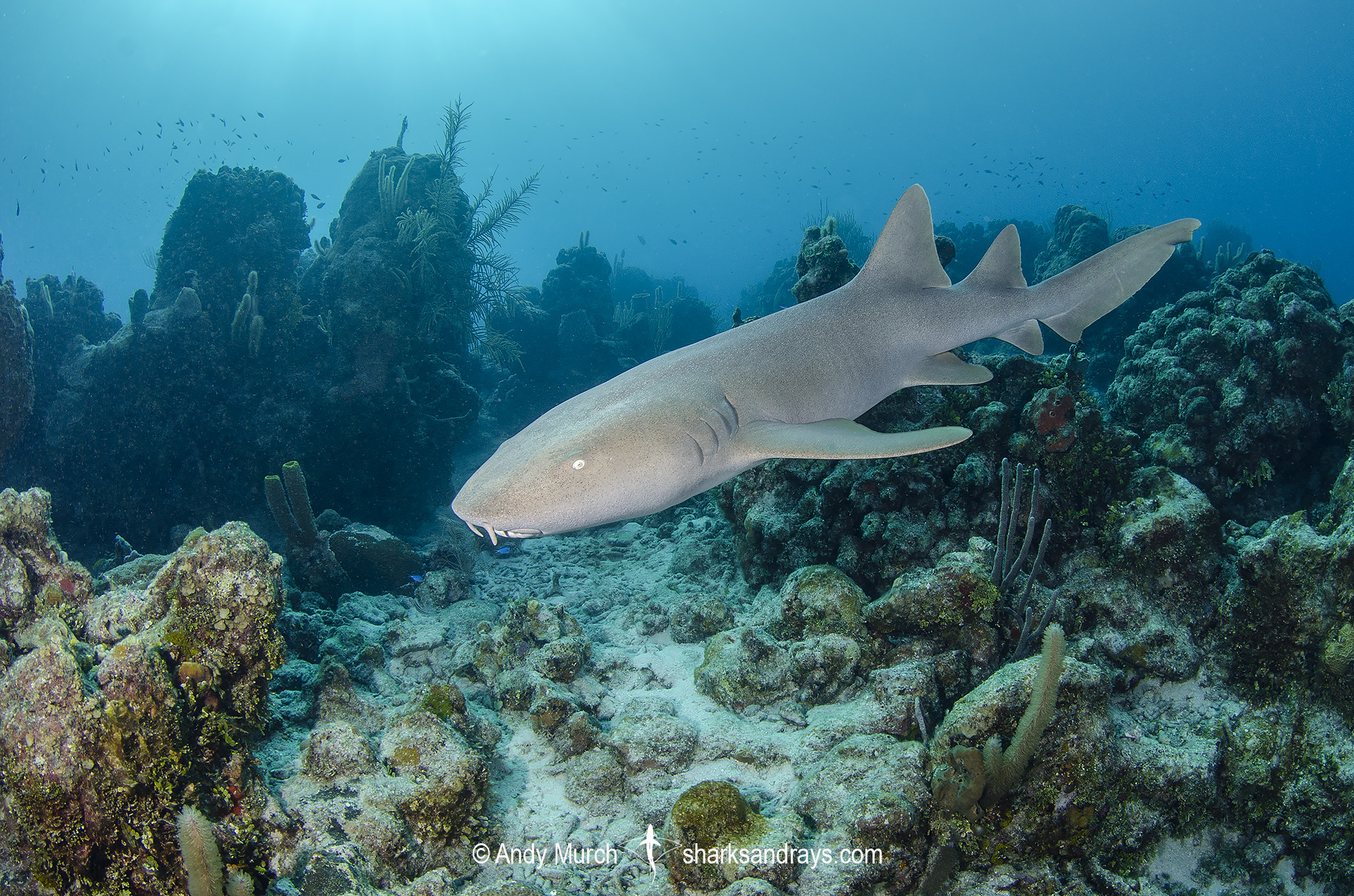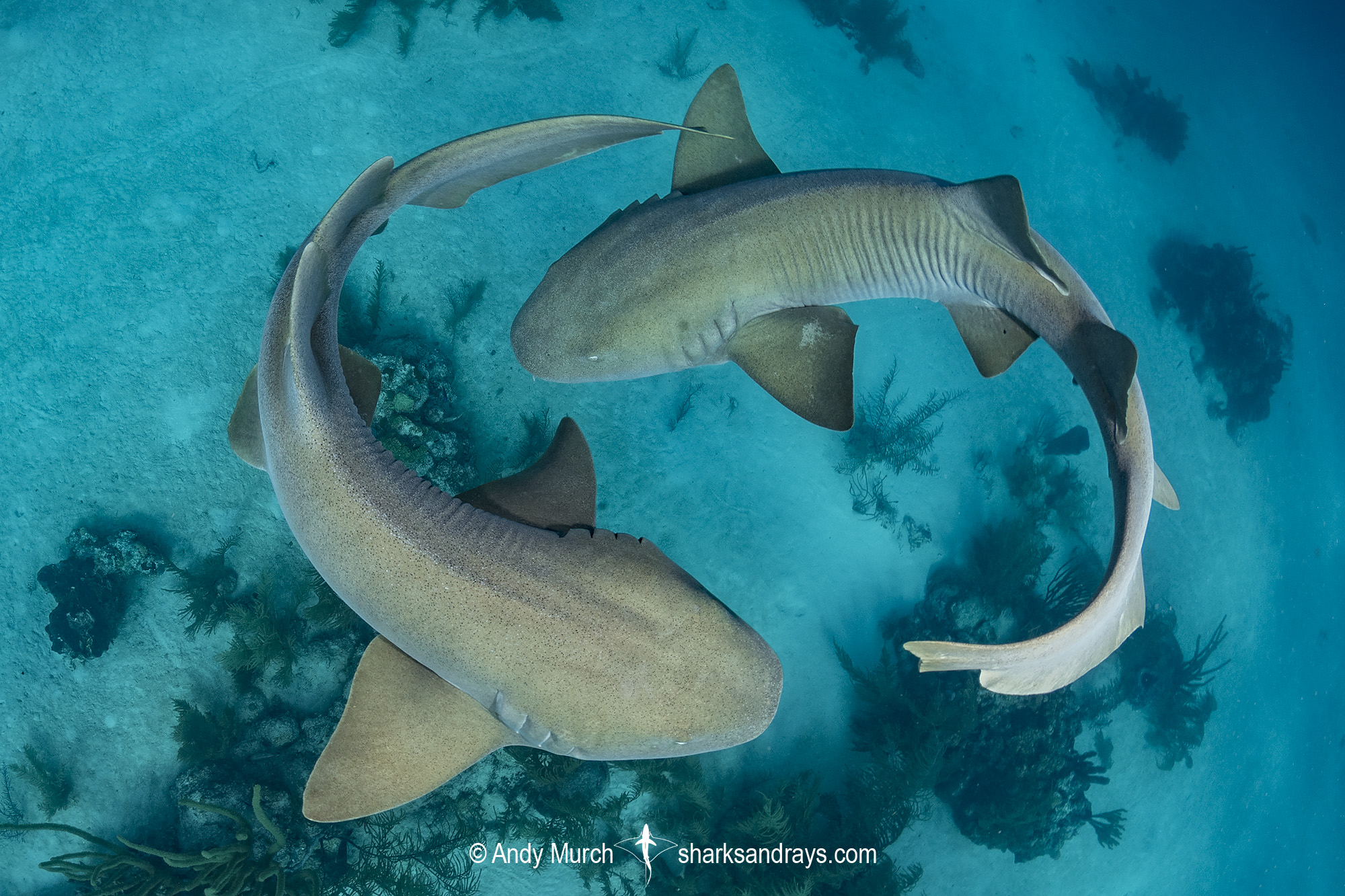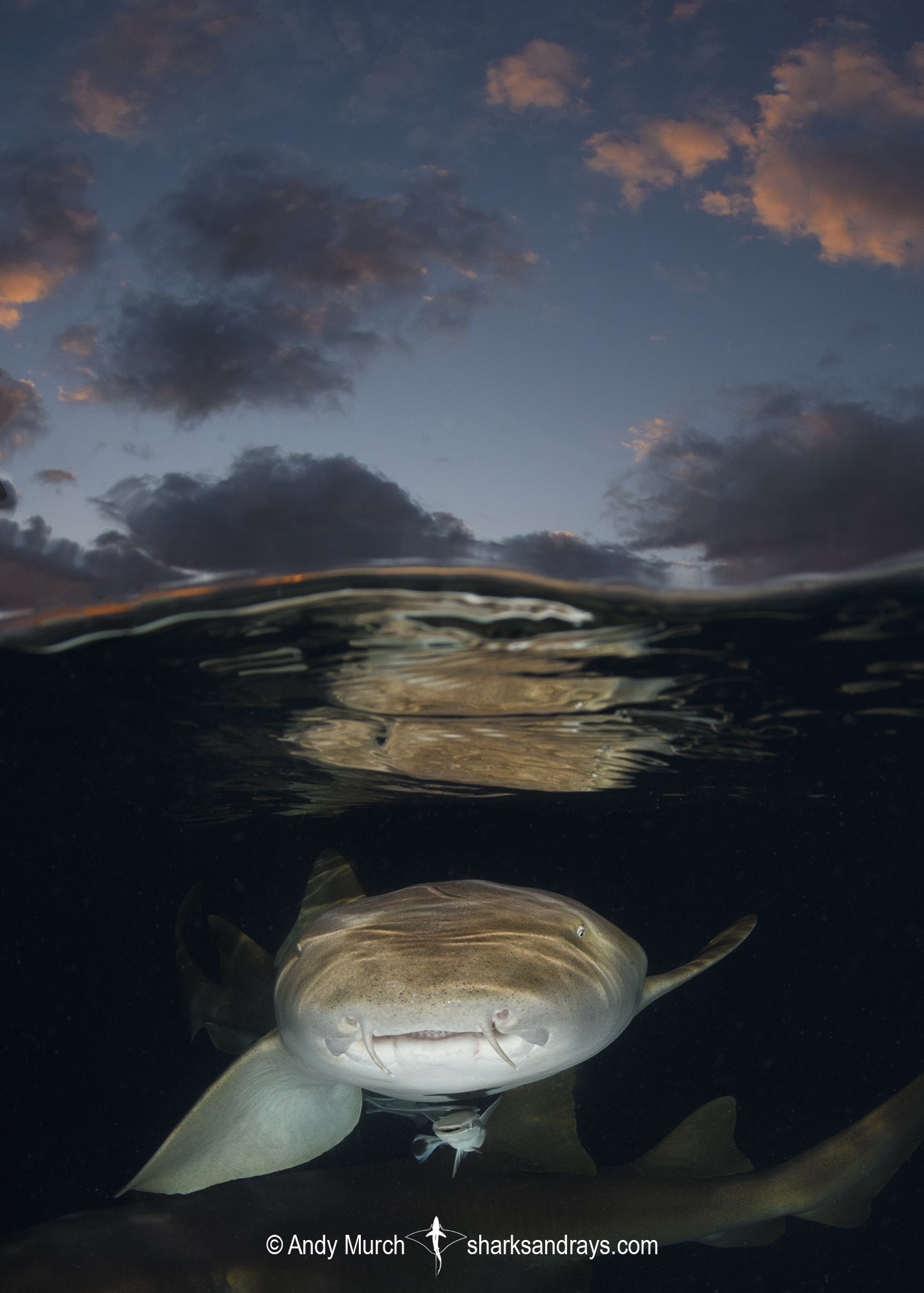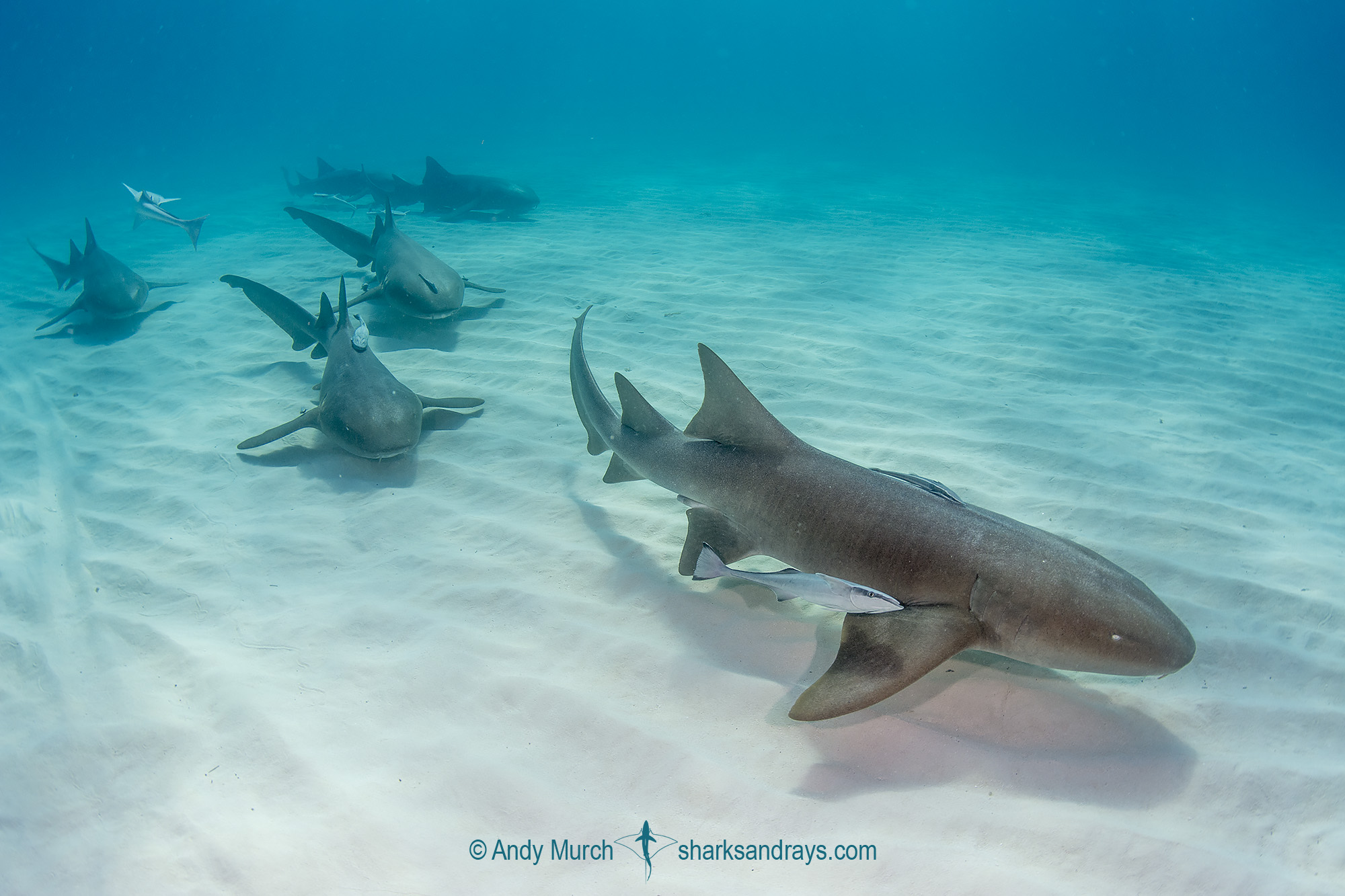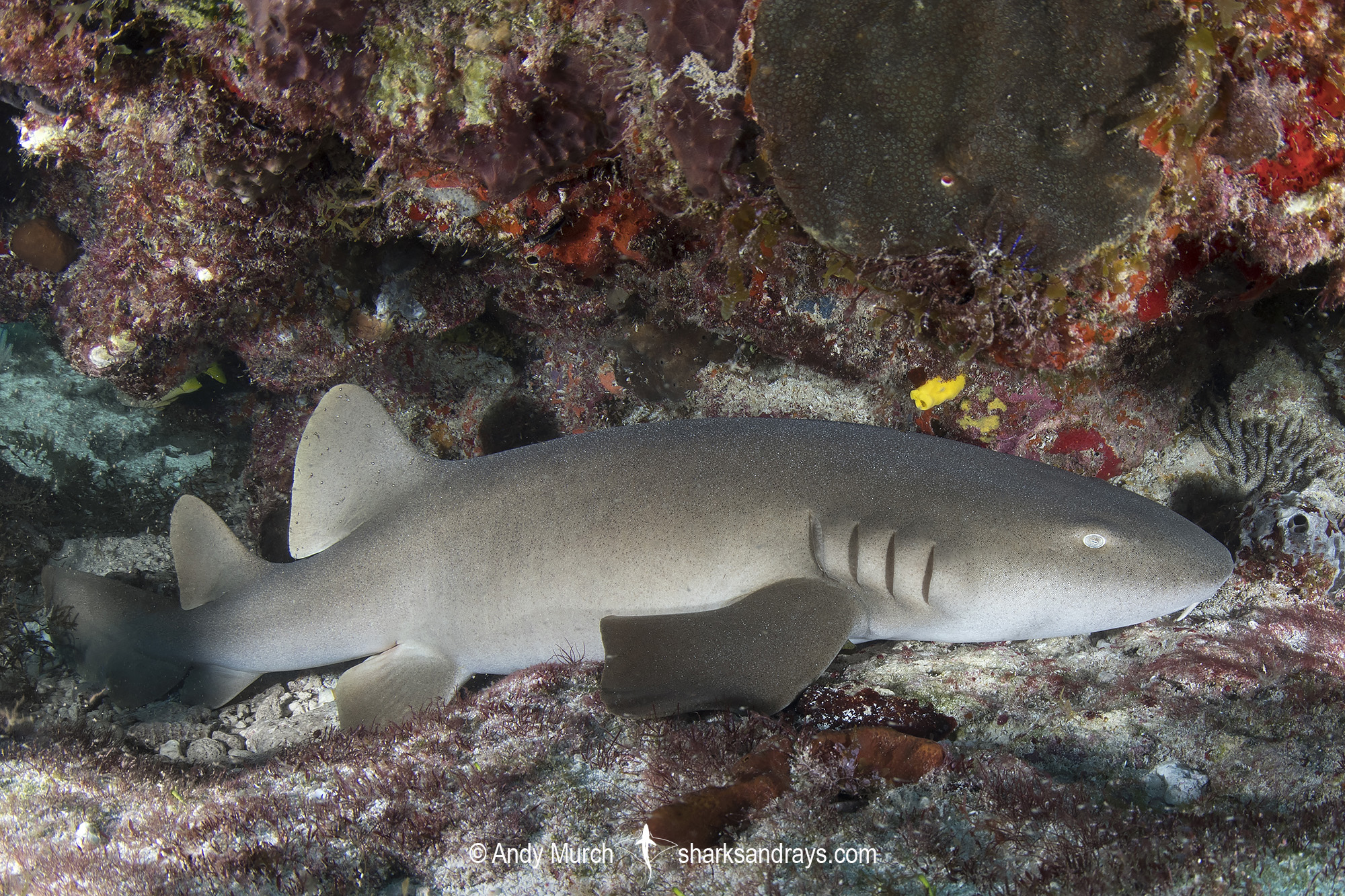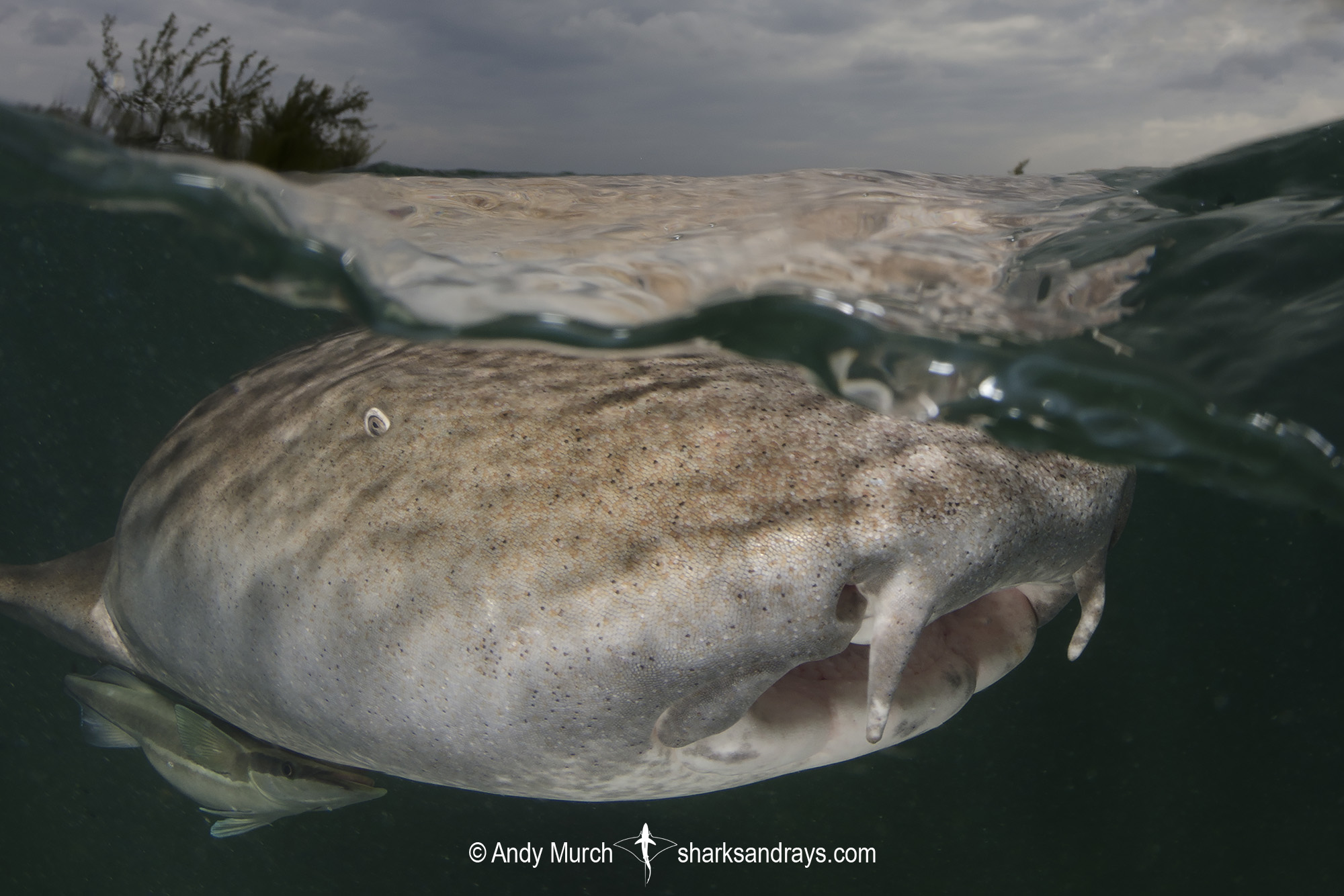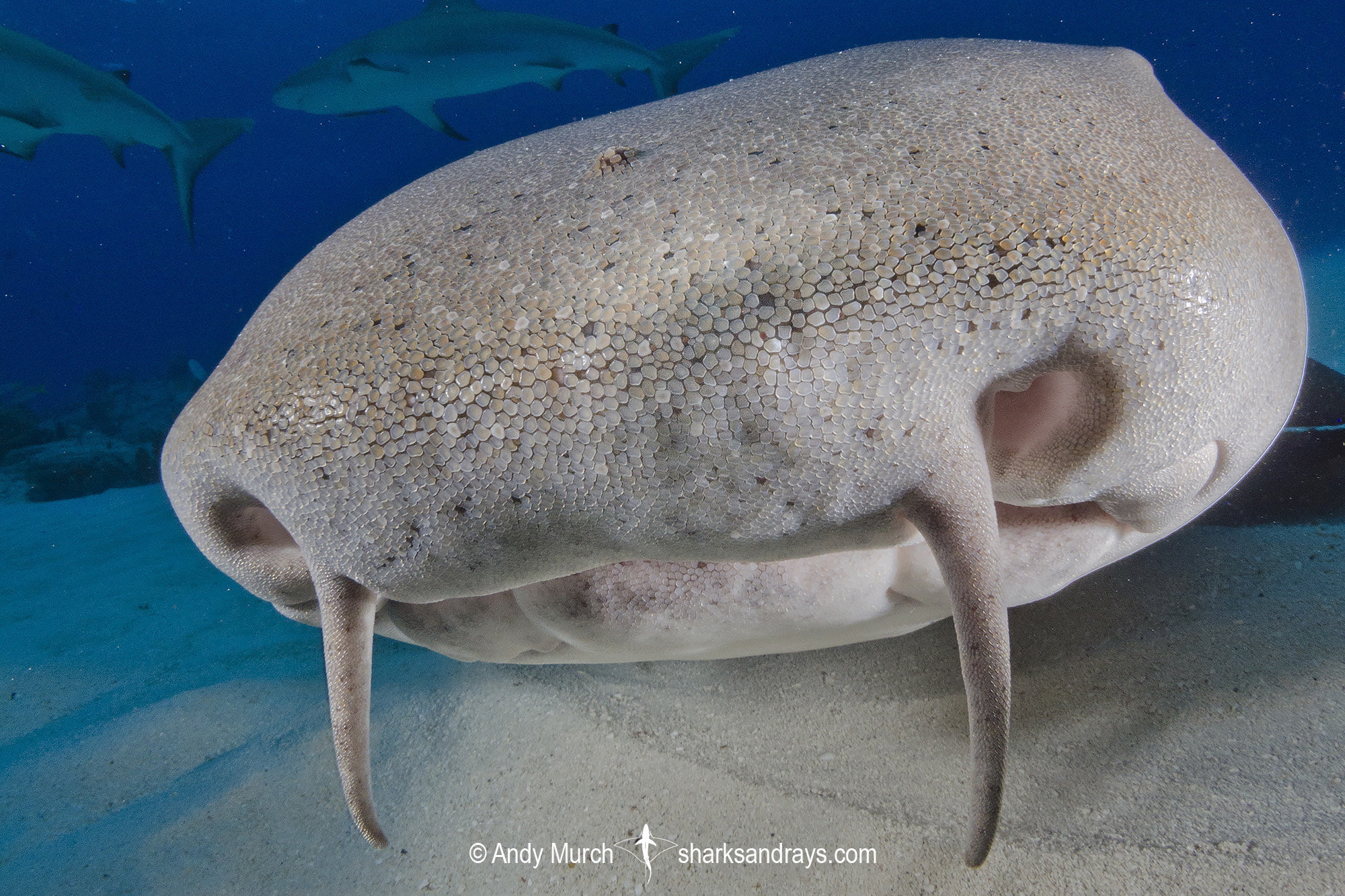Common names
Nurse Shark, Common Nurse Shark, Atlantic Nurse Shark.
Binomial
Ginglymostoma cirratum.
Synonyms
Ginglimostoma cirratum, Ginglymostoma caboverdianus, Ginglymostoma fulvum, Gyglinostoma cirratum, Squalus argus, Squalus cirratus, Squalus punctatus, Squalus punctulatus.
Identification
Head broad. Snout short and bluntly rounded. Mouth small. Nasal flaps form long, thin barbells. First dorsal fin positioned far back on body, the origin slightly anterior of pelvic fin origins. Second dorsal large but smaller than first. Second dorsal fin origin midway between pelvic fin free rear tip and anal fin origin. Lower caudal lobe indistinct. Dorsal coloration tan to dark brown. Neonates and small juveniles (up to 45cm) may have subtle light and dark bands and small scattered dark spots that fade with age. Small juveniles are rarely seen. Ventral surface white, cream, or blotchy.
Size
Maximum length 308cm. Reports of far longer specimens (up to 450cm) are generally considered exaggerations. Size at birth 27-30cm.

Conservation Status
VULNERABLE
In the US and Belize the Atlantic Nurse Shark population is increasing. There is also a robust population in the Bahamas, but declines have been in the Caribbean Sea e.g. in Cuba and along the Atlantic coast of Costa Rica. Further South, intense and largely unmanaged coastal commercial and artisanal fisheries, have caused a rapid decline in other shallow-water coastal elasmobranchs.
In West Africa, the Atlantic Nurse Shark is not targeted, but is a retained bycatch in coastal fisheries. A noted reduction the in the number and size of individuals seen in markets indicates that the West African population has undergone a decline of approximately 30%. Collectively, the Atlantic NUrse Shark has declined by 30-49% in the last 90 years.

Habitat
A tropical species preferring shallow sandy bays, coral reefs, and sea grass beds. Usually found on or near the bottom from close inshore to 130m.
Distribution
Present on both sides of the tropical Atlantic. In North America, the nurse shark has been recorded from Rhode Island to Southern Brazil during extremely warm periods but its range is usually limited to the tropics.
Records from the eastern tropical Pacific now refer to the recently described Pacific nurse shark (Ginglymostoma unami).
In the eastern Atlantic, nurse sharks have been recorded from the south of France to central Africa. However, nurse sharks from this region may eventually be classed as separate species.
Reproduction
An aplacental viviparous species (without a yolk-sac placenta). 20-50 pups per litter. DNA analysis has shown that litters contain young from multiple males.
Diet
The nurse shark preys on a wide variety of small fishes, crustaceans, and other invertebrates.
Behavior
Nurse sharks may be found alone or resting in small groups. When hunting, they are able to force a jet of water out of their mouth in order to dislodge prey. While photographing nurse sharks at the surface in a marina in Cat Island in the outer Bahamas, a nurse shark repeatedly stuck its head out of the water and sprayed a jet of water at me to try to dislodge the fish scrap I was holding.
In the western Atlantic, nurse sharks migrate north and south during the summer.
Reaction to divers
Very easy to approach when resting under reef ledges. Can become over enthusiastic in baited situations.
CAUTION: I have seen numerous divers stroking or patting the heads of nurse sharks during shark feeds. Although most divers get away with this, there are numerous reports of nurse sharks grabbing ahold of hands or other body parts and refusing to let go. Admittedly, nurse sharks have small teeth but they are capable to doing a great deal of damage.
Diving logistics
The nurse shark is a very common species that is regularly encountered by divers in Florida, and the Caribbean. In fact, there are probably hundreds of dive sites throughout the Caribbean where nurse sharks are the main attraction on the dives.
Nurse sharks are especially abundant in The Bahamas. At Bimini Island where operators conduct great hammerhead shark feeds, it is not uncommon for 20 or 30 nurse sharks to show up as well. They are not intentionally fed there, but they seem content to sit right in front of the bait crate hoping that an occasional scrap will fall to the sand.
Tiger Beach also has a handful of resident nurse sharks that are always present during tiger shark trips.
If you are aware of dive sites off the coast of Africa where nurse sharks can be encountered, please email me the details.
What’s new
View our full list of updates
Similar species
Lemon Shark Although only vaguely similar, lemon sharks are sometimes confused with nurse sharks because of their light brown coloration and two large dorsal fins. The lemon shark is easily distinguished by its more pointed head, lack of barbells, pointed teeth, and first dorsal positioned just posterior to the pectoral fins.


